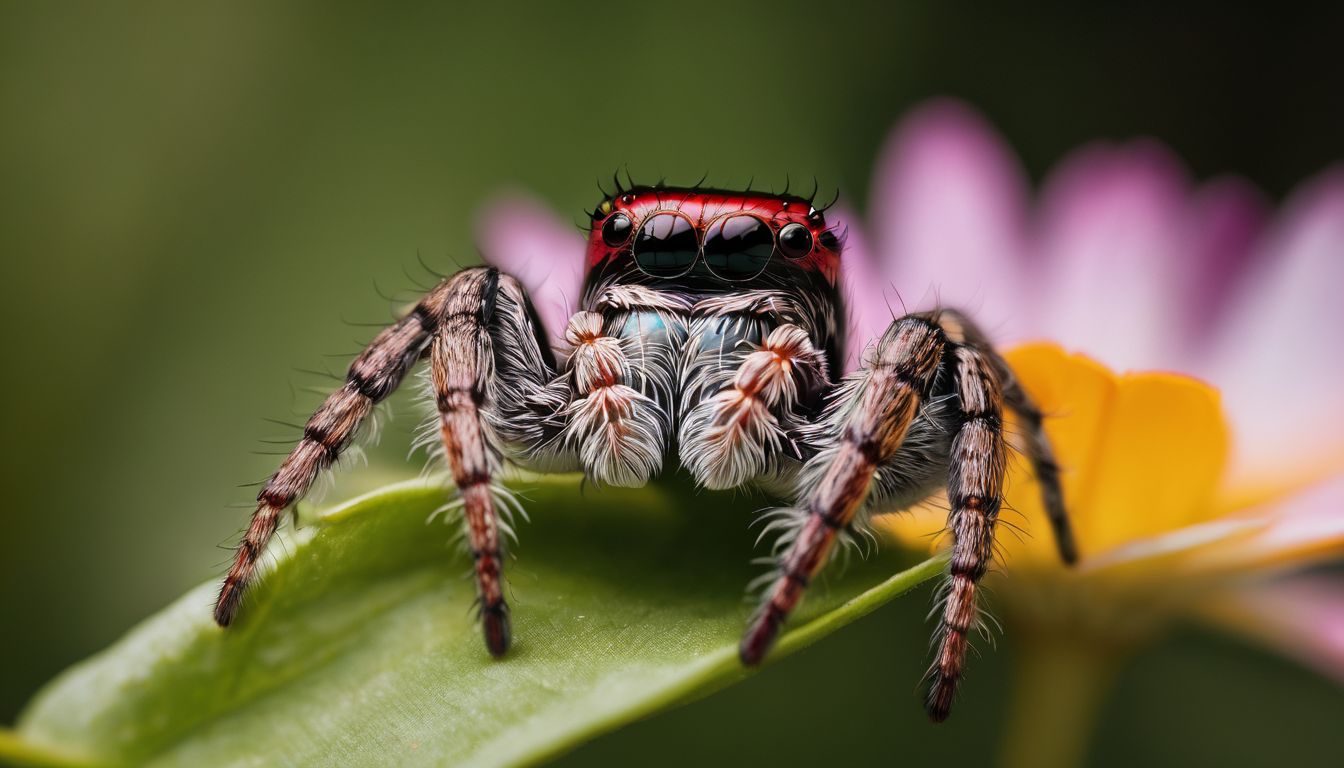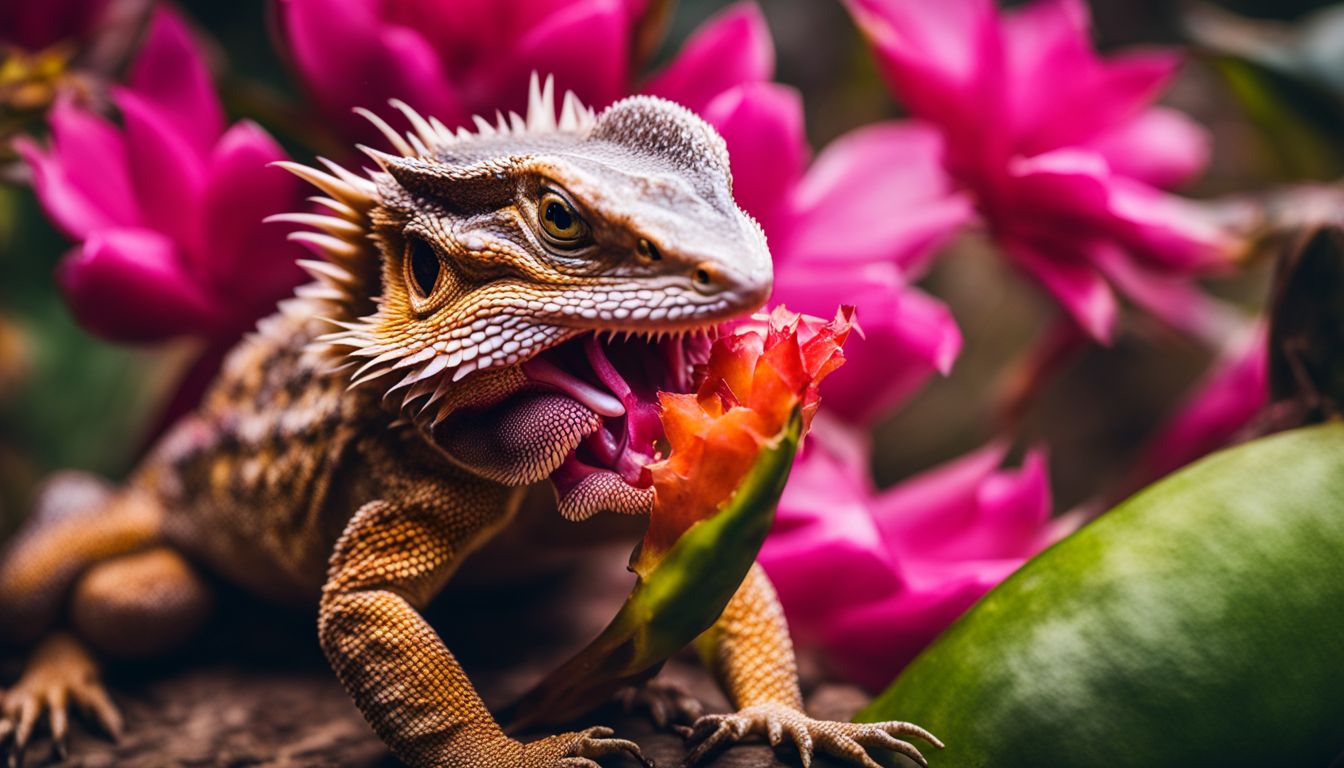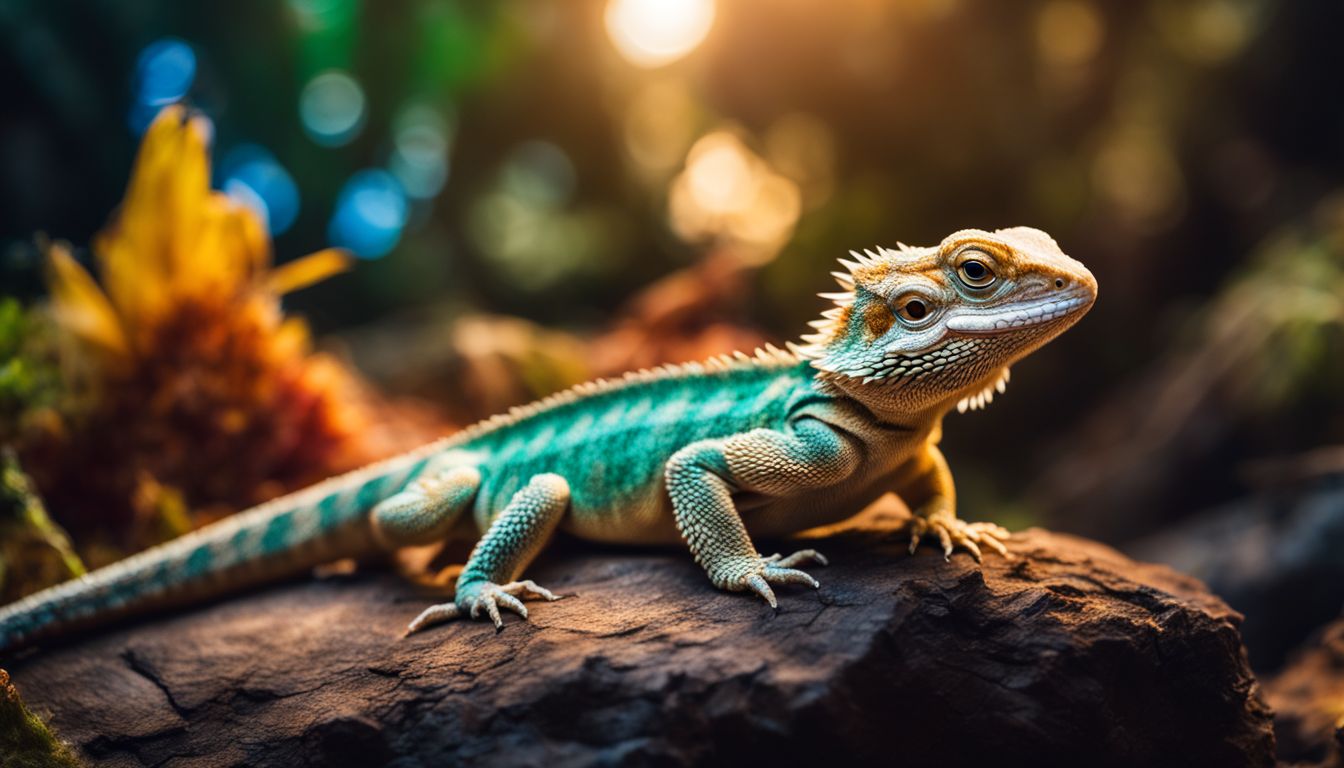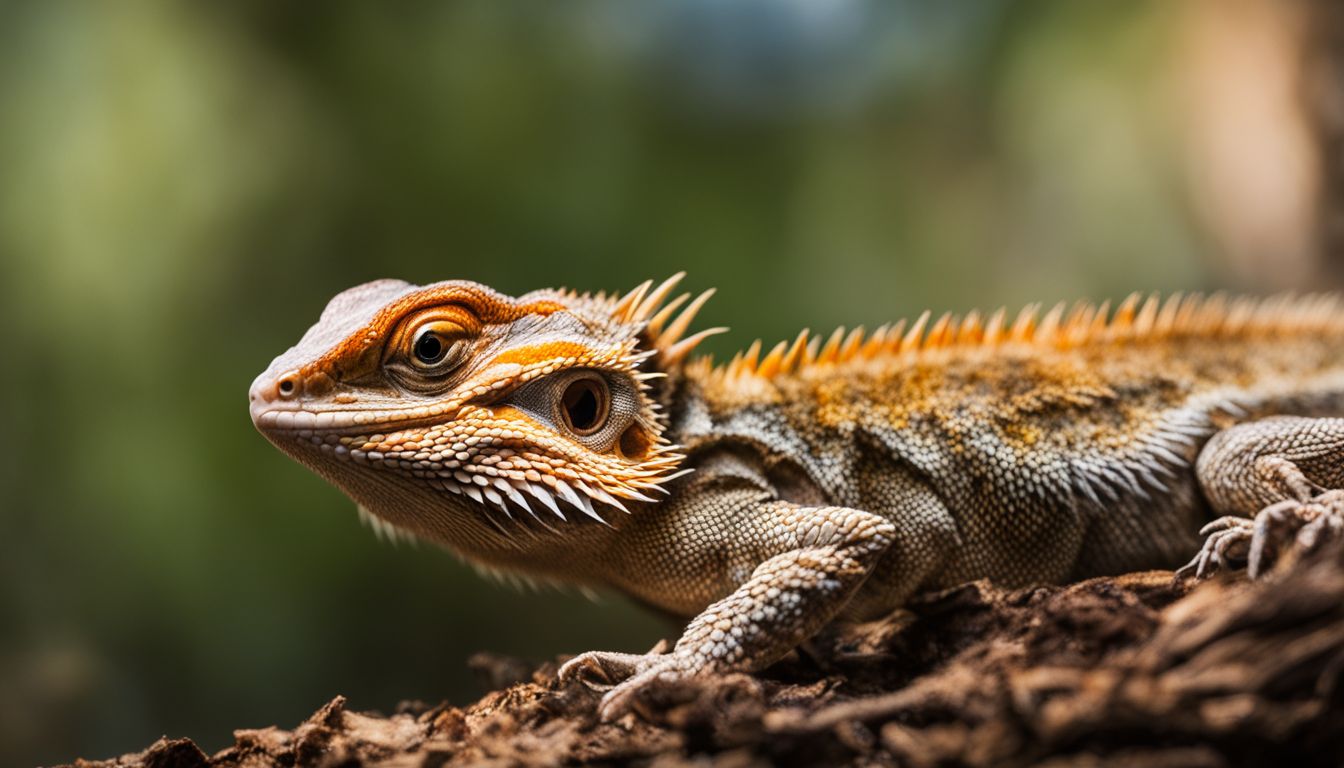Are you wondering how often those fascinating little jumping spiders need to feast? Here’s a fact: these agile arachnids eat more frequently than their larger cousins, needing meals several times a week.
In this article, we’ll dive into the tiny world of jumping spiders to guide you on their feeding habits and frequencies, ensuring your eight-legged friend is both happy and healthy.
Keep reading; it’s time for some spider dining insights!
Key Takeaways
- Jumping spiders need to eat several times a week, preferring small live prey such as fruit flies, dubia roaches, and beetles for a well-balanced diet.
- Feeding frequency differs based on the spider’s life stage: juvenile jumping spiders require 2-3 meals per week while adults need feeding every 5-10 days.
- Proper hydration is crucial; jumping spiders actively drink water and require access to fresh water daily. Avoid using large or aggressive prey when feeding them.
Understanding the Jumping Spider Diet
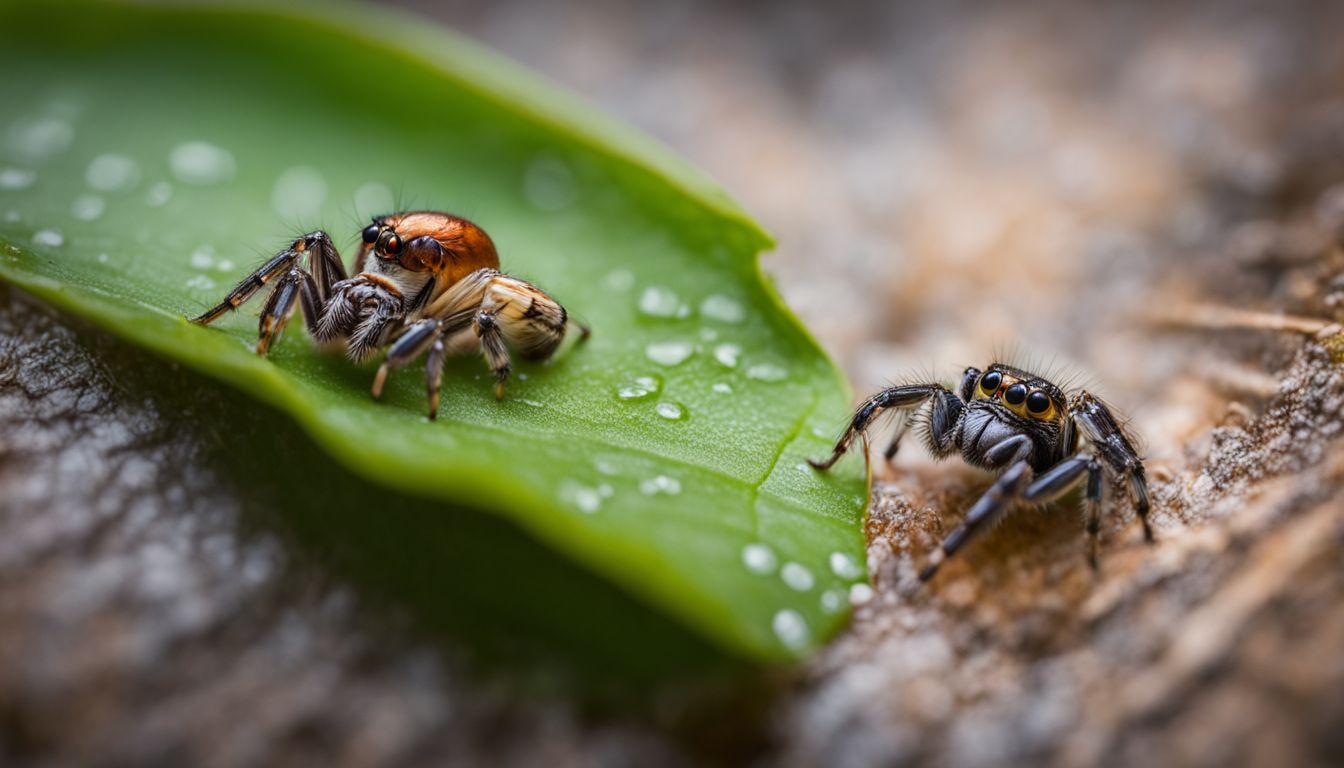
Jumping spiders are omnivores and commonly feed on live prey such as fruit flies, dubia roaches, beetles, and wax worms. It’s important to provide a variety of nutritious food sources for a well-balanced diet.
Common Prey for Jumping Spiders
Jumping spiders love to hunt small bugs. They chase after fruit flies, tiny beetles, and even other spiders that are not bigger than them. These little hunters are always on the lookout for live prey to grab with their quick jumps.
Sometimes they might sip nectar too, just like they would munch on a bug.
They use their sharp eyesight to spot lunch walking by. After catching their food, jumping spiders make sure it’s fresh and moving before they eat. Next up is how important it is for these spiders to have different things to eat.
The Importance of Variety in Diet
Just like people, jumping spiders need different kinds of food to stay healthy. Eating the same thing all the time is not good for them. They are hunters who love live food and getting many types helps them get all the stuff they need to grow and be strong.
Having a mix in their meals means they can catch various insects that each have unique benefits. Some bugs give more protein, while others might have fats or vitamins that help the spider’s body work right.
Feeding your spider friends a range of prey keeps mealtime exciting for them too. It makes sure they use their hunting skills in different ways, which is good for keeping their minds sharp and bodies active during the day.
A healthier diet with lots of choices also means these little predators will be better at catching food on their own if they ever go back to living in the wild.
Feeding Frequency and Quantity for Optimal Health
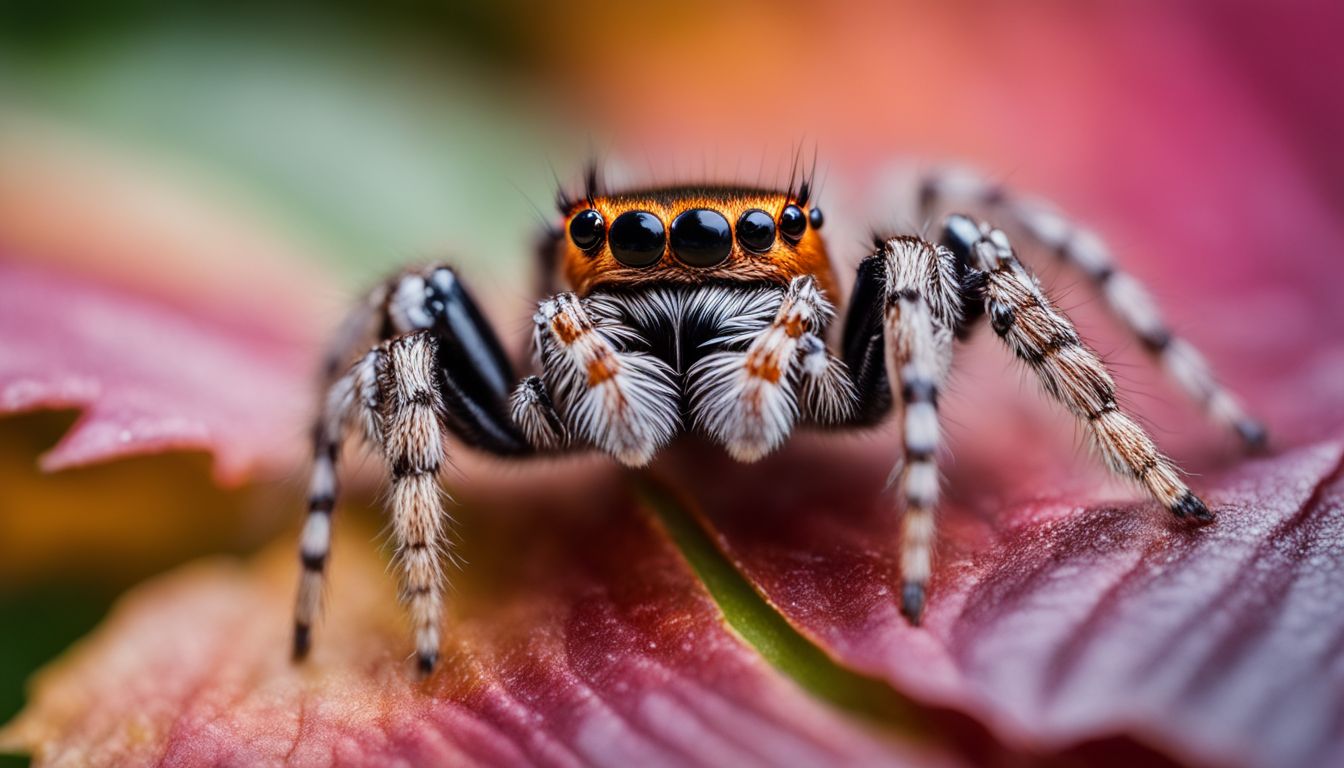
Establishing the right feeding schedule and portion size is crucial for the health of your jumping spider. Different guidelines apply to juvenile and adult spiders, and it’s important to recognize signs of overfeeding or underfeeding.
Guidelines for Juvenile vs. Adult Jumping Spiders
Understanding the dietary needs of your jumping spider is crucial for its well-being. The right feeding frequency can differ significantly depending on whether your spider is a juvenile or an adult. Here’s a simple guide to help you determine how often to feed your jumping spider at different stages of its life.
| Spider Age | Feeding Frequency | Quantity | Signs of Adequate Feeding | Signs of Inadequate Feeding |
|---|---|---|---|---|
| Juvenile | 2-3 times per week | Small insects, as many as they can consume in one sitting | Active hunting behavior, steady growth | Lethargy, lack of growth |
| Sub-adult | Every 3-8 days | Larger prey items, one at a time | Continued growth, healthy physique | Weight loss, sluggishness |
| Adult | Every 5-10 days | One appropriately sized insect per feeding | Consistent weight, vigorous activity | Constant hunting, thin abdomen |
Young jumping spiders need more frequent meals to support their rapid growth, while adults can go longer between feedings. Always monitor your spider’s behavior and appearance to ensure they’re getting the right amount of food.
Recognizing Signs of Overfeeding or Underfeeding
After understanding the feeding guidelines for juvenile and adult jumping spiders, it is essential to recognize signs of overfeeding or underfeeding. Here are some important signs to look out for:
- Shriveled Abdomen: A shriveled or visibly reduced abdomen may indicate that the spider is not getting enough food and needs to be fed more.
- Increased Aggression or Activity: If your jumping spider becomes more aggressive or overly active, it may be a sign of hunger and underfeeding.
- Visibly Larger and Distended Abdomens: Overfeeding can lead to health issues such as visibly larger and distended abdomens, indicating an excessive intake of food.
- Gradually Increasing Feeding: It is important to gradually increase feeding if signs of underfeeding are observed, rather than overfeeding in response.
Hydration: Ensuring Your Jumping Spider Stays Hydrated
Jumping spiders require hydration just like any other living creature. Learn about the important water sources for jumping spiders and how to monitor their hydration levels to keep them healthy.
Water Sources for Jumping Spiders
Jumping spiders need fresh water every day. They don’t drink from water dishes as they might fall in and drown, so lightly mist their container daily. Humidity is essential for them, keeping them hydrated and aiding in the molting process.
There are different options for providing hydration to jumping spiders, such as misting their enclosure with a spray bottle or placing water droplets on leaves or silk threads for them to drink from.
Ensuring that your jumping spider has access to fresh water every day will help keep them healthy and active.
Monitoring Hydration Levels
To monitor hydration levels, observe your jumping spider’s behavior and appearance. If the spider is active and its body looks plump, it is likely well-hydrated. However, if the spider appears lethargic or its body looks shriveled, it may be dehydrated.
Additionally, ensure that there is always a fresh supply of water available for your jumping spider to drink from. By keeping a close eye on these signs and providing access to water, you can help maintain your jumping spider’s hydration levels.
– Do Spiders Drink Water?? After understanding how to monitor hydration levels for your jumping spider, let’s explore the sources of water they need to stay healthy.
Do Spiders Drink Water?
Jumping spiders require fresh water on a daily basis to avoid dehydration. It’s best to spray water on one side of the terrarium with a spray bottle two to three times a week to provide the spiders with liquid.
Unlike tarantulas, jumping spiders are active drinkers and need access to water at all times.
Ensuring that your jumping spider stays hydrated is crucial for its well-being. These tiny creatures actively drink water and require regular access to it. By providing them with fresh water in their habitat, you can help them stay healthy and active.
Tips for Feeding Your Jumping Spider
When feeding your jumping spider, it’s important to schedule regular feedings for consistency and to ensure that your spider stays healthy. Additionally, always handle feeder insects safely to avoid injuring both the insect and your spider.
Scheduling Feedings for Consistency
Young jumping spiders should be fed 2-3 times per week, while adult ones need feeding every three days. Consistency in feeding helps maintain their health and vitality. Offering the right amount and type of food is crucial, supporting their nutritional needs adequately.
This allows them to thrive without being overfed or underfed.
It’s important to monitor your jumping spider’s eating habits closely, adjusting the feeding schedule as needed for optimal health. Feeding consistently ensures they receive the nutrition they require at appropriate intervals.
Safe Handling of Feeder Insects
When handling feeder insects for your jumping spider, it’s important to ensure they are safely sourced. Opt for small insects like pinhead crickets or freshly killed crickets as these are safer options.
Avoid using large or aggressive prey to prevent any harm to your spider. Always supervise the feeding process and remove any uneaten prey after a few hours to maintain a clean environment.
Now let’s explore the next section about “Hydration: Ensuring Your Jumping Spider Stays Hydrated” for more insights on keeping your spider healthy and happy.
Conclusion
In conclusion, understanding the feeding habits of jumping spiders is crucial for their well-being. By providing a variety of small insects as prey, maintaining proper feeding frequency based on their life stage, and ensuring hydration, you can help your jumping spider thrive.
Remember to observe their hunger cues and handle feeder insects safely when feeding them. With this knowledge, you can ensure that your jumping spider stays healthy and happy in its environment.
FAQs
1. What do jumping spiders eat?
Jumping spiders, known as Salticidae, are obligate carnivores that catch and eat other small bugs like wasps.
2. How often do jumping spiders need to eat?
These spiders don’t have to eat every day; some can go for a few weeks without food if they had a big meal before.
3. Is there a jumping spider that eats plants?
Yes, the Bagheera kiplingi is special because it also eats plant parts along with insects, unlike most other spiders.
4. Can you feed something else besides bugs to a pet jumping spider?
No, since they’re meat-eaters by nature, feeding them anything but live prey or predated insects won’t work.

